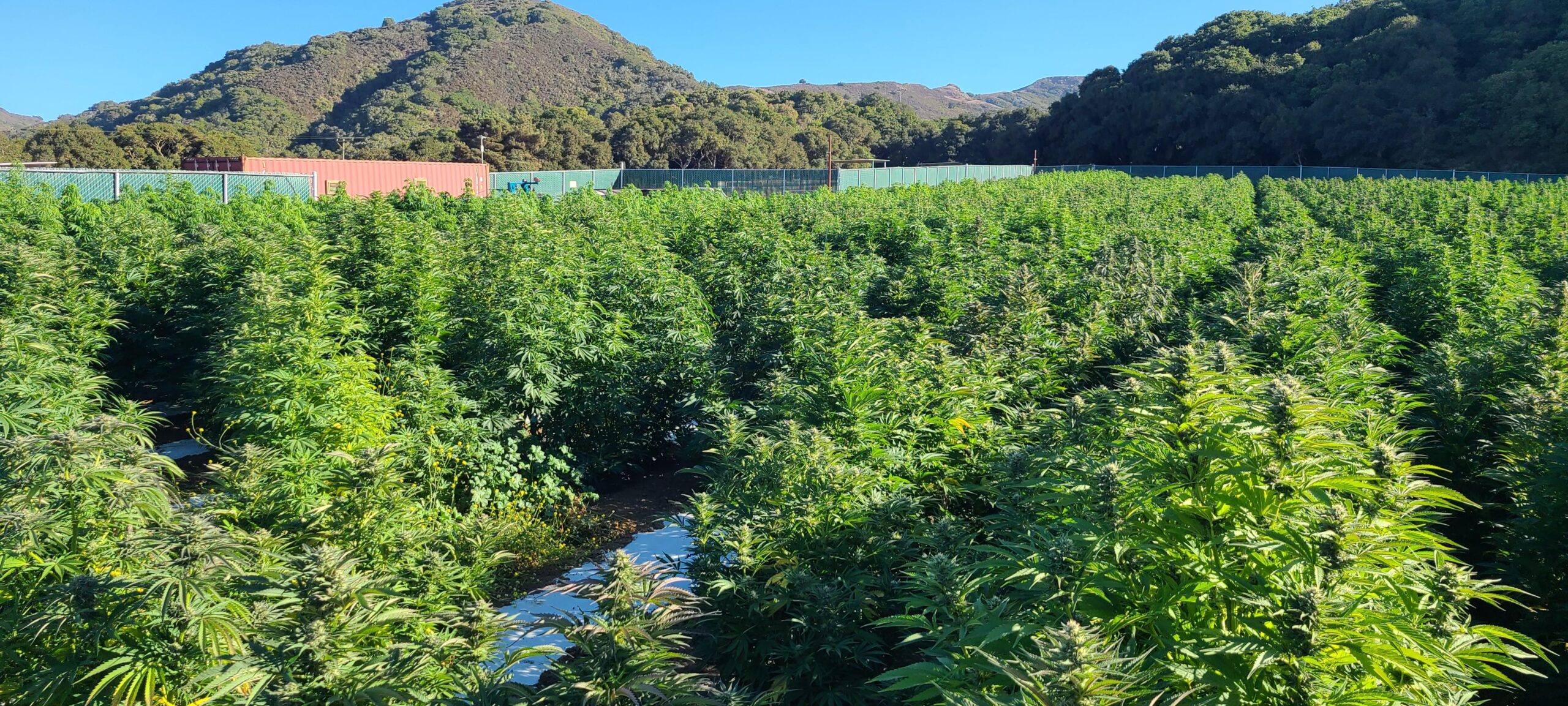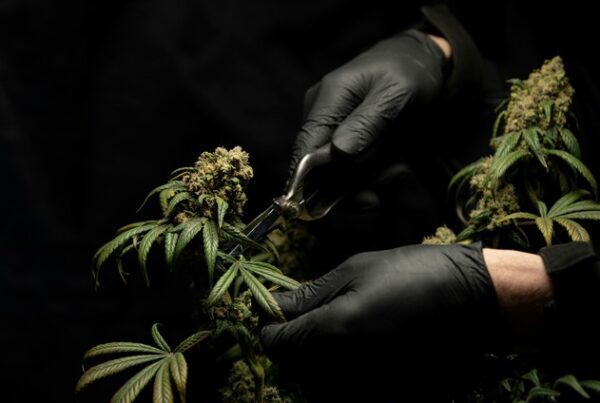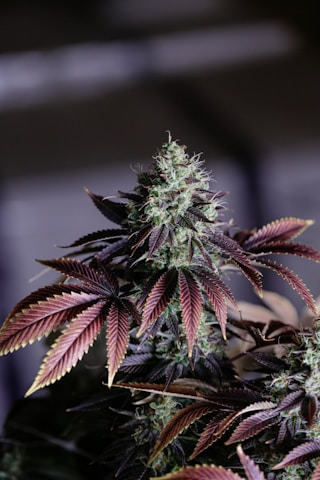
Embark on a journey to unlock the full potential of regular seeds in your cannabis garden. Regular seeds are the foundation of genetic diversity and can offer a plethora of benefits to both seasoned and novice growers. In this guide, we will delve into the advantages of regular seeds, explore how they can enhance your cultivation experience, and provide tips on maximizing their potential. Whether you are looking to discover unique phenotypes, breed your own strains, or simply enjoy the natural variability regular seeds offer, this comprehensive resource will equip you with the knowledge and skills needed to take your cannabis garden to the next level. Embrace the diversity, embrace the possibilities, and unlock the hidden gems waiting to sprout from your regular seeds. Get ready to elevate your growing journey and cultivate a garden that truly reflects your passion and dedication to the art of cannabis cultivation.
Benefits of Regular Seeds in Cannabis Cultivation
Regular seeds in cannabis cultivation offer several benefits that set them apart from other seed types. The natural genetic variation found in regular seeds leads to increased genetic diversity, resulting in plants with unique characteristics and adaptability. This diversity is crucial for the long-term success of cannabis cultivation as it provides a broader genetic pool to work with, allowing for the development of plants that can better withstand environmental stressors and pests.
Strong Root Systems
One of the key advantages of regular seeds is the development of stronger root systems. These robust root systems contribute to better nutrient uptake, overall plant stability, and increased resilience to various growing conditions. As a result, plants grown from regular seeds are often healthier, more vigorous, and better equipped to handle fluctuations in environmental factors.
Breeding Potential
Moreover, regular seeds offer significant breeding potential for cannabis growers. By selectively breeding plants from regular seeds, breeders can create new and unique strains that meet specific preferences and requirements. This breeding process allows for the development of strains with desired characteristics such as specific flavor profiles, cannabinoid content, and growth patterns, enhancing the overall diversity and quality of cannabis products available in the market.
Environmental Friendliness
In addition to genetic diversity and strong root systems, regular seeds also provide an environmentally friendly option for growers. Since regular seeds are not feminized or genetically altered, they offer a more sustainable approach to cannabis cultivation. This natural cultivation method aligns with organic and eco-conscious practices, appealing to consumers who prioritize environmentally friendly products.
Adaptability
Furthermore, the resilience of plants grown from regular seeds extends beyond their ability to withstand environmental stressors. These plants often exhibit greater adaptability to changing conditions, making them suitable for various growing environments and cultivation techniques. This adaptability is especially beneficial for novice growers or those facing unpredictable climate conditions, as regular seeds can produce robust plants that thrive in diverse settings.
Affordability
Another advantage of regular seeds is their affordability compared to other seed types. Since regular seeds are not subjected to the additional breeding processes required for feminized or autoflowering seeds, they are usually more cost-effective. This cost savings can be significant for commercial growers or individuals looking to cultivate cannabis on a larger scale.
Conclusion
The benefits of regular seeds in cannabis cultivation are multifaceted. From genetic diversity and strong root systems to sustainability and affordability, regular seeds offer a comprehensive solution for growers seeking high-quality, adaptable cannabis strains. By harnessing the natural genetic variation and breeding potential of regular seeds, cultivators can explore endless possibilities in creating unique and resilient cannabis varieties that cater to a diverse market.
How to Cultivate Regular Seeds
Choosing the Right Regular Seeds
Selecting the perfect regular seeds is crucial for a successful cultivation journey. Look for reputable seed banks or breeders to ensure quality and genetic purity. Consider factors such as desired effects, growth characteristics, and flowering times when making your selection. It’s also beneficial to opt for seeds that are suited to your growing environment, whether indoor or outdoor, to maximize plant health and yield potential.
Germination Techniques
Proper germination is the first step towards growing robust plants from regular seeds. Popular germination methods include the paper towel method, direct soil planting, and germination kits. Ensure seeds are placed in a warm, dark environment with adequate moisture for successful sprouting. Monitoring the germination process closely and providing a consistent environment will enhance germination rates and overall plant vigor.
Tips for Nurturing Healthy Plants
Once your regular seeds have sprouted, it’s essential to provide optimal care for their growth. Maintain a suitable light cycle, nutrient regimen, and watering schedule based on the specific needs of your plants. Consider factors like humidity levels, air circulation, and temperature control to create an ideal growing environment. Regularly inspect your plants for signs of stress, nutrient deficiencies, or pests, and take proactive measures to address any issues promptly. Implementing organic pest control methods and using quality fertilizers can promote robust plant growth and improve overall crop quality.
Importance of Soil Quality
Soil quality plays a significant role in the growth and development of plants from regular seeds. Choose a well-draining, nutrient-rich soil mix to provide essential elements for plant growth. Consider conducting a soil test to determine pH levels and nutrient content, allowing you to adjust soil amendments accordingly. Organic matter, such as compost or aged manure, can enhance soil structure and fertility, promoting healthy root development and overall plant vigor.
Training and Pruning Techniques
Training and pruning are essential practices to optimize plant growth and maximize yield potential. Techniques like topping, low-stress training, and defoliation can help control plant height, promote lateral growth, and improve light penetration throughout the canopy. By strategically pruning your plants during vegetative and flowering stages, you can encourage bud development, increase airflow, and reduce the risk of mold or mildew issues.
Harvesting and Curing Process
Knowing when and how to harvest your plants from regular seeds is critical to preserving potency and flavor. Monitor trichome development using a magnifying tool to determine the ideal harvest time based on desired effects. After harvesting, implement a proper curing process to enhance aroma, flavor, and smoothness of the final product. Curing involves drying and storing buds in a controlled environment to maintain optimal moisture levels and preserve terpene profiles, resulting in a high-quality end product.
Final Thoughts
Cultivating regular seeds requires patience, dedication, and attention to detail throughout the entire growth cycle. By selecting quality seeds, mastering germination techniques, and providing optimal care, you can nurture healthy plants and achieve a successful harvest. Remember to continuously educate yourself on best practices, experiment with different cultivation methods, and adapt your approach based on the unique characteristics of your plant genetics and growing environment. With perseverance and a passion for cultivation, you can cultivate regular seeds into thriving plants and enjoy the rewards of your hard work and dedication.
Maintaining Genetic Purity
In the realm of horticulture and agriculture, the concept of maintaining genetic purity is paramount to the success and sustainability of plant species. This blog section delves into the crucial practices and techniques that ensure the preservation of genetic integrity in plants.
Isolating Plants to Avoid Cross-Pollination
One of the fundamental methods for maintaining genetic purity is isolating plants to prevent cross-pollination. When different plant varieties intermingle through pollination, the resulting offspring may not retain the desired traits of the parent plants. By physically separating plant varieties or utilizing isolation structures like nets or cages, horticulturists can control pollination and safeguard the genetic purity of each plant.
Techniques for Preserving Genetic Integrity
Beyond isolation, various techniques can aid in preserving the genetic integrity of plants. These include meticulous record-keeping to track plant lineages, implementing rigorous quality control measures during breeding processes, and utilizing advanced technologies such as genetic testing to verify the purity of plant strains. Additionally, creating buffer zones between different plant varieties and adhering to strict hygiene practices can further prevent unintended cross-pollination and genetic contamination.
Maintaining genetic purity is a multifaceted task that requires diligence, expertise, and a deep understanding of plant genetics. By employing strategies like isolating plants and implementing stringent preservation techniques, horticulturists and farmers can ensure the longevity and sustainability of plant species for generations to come.
Challenges in Maintaining Genetic Purity
While the concept of genetic purity is clear, the practical implementation comes with its own set of challenges. Factors such as environmental conditions, invasive species, and human error can pose significant threats to genetic integrity. Adverse weather patterns, for instance, can facilitate the spread of pollen beyond isolation barriers, leading to unintended cross-breeding. Invasive species carrying foreign genetic material can also infiltrate cultivation areas, compromising the purity of local plant populations. Moreover, mistakes in labeling or inadequate monitoring of breeding processes can result in genetic contamination.
Mitigation Strategies and Best Practices
To address these challenges, horticulturists and farmers must adopt robust mitigation strategies and best practices. Regular monitoring of plants for any signs of cross-pollination, such as off-type characteristics or unexpected traits, is essential to detect and address genetic impurities promptly. Implementing strict quarantine measures to prevent the introduction of invasive species and conducting regular inspections of cultivation areas can help maintain genetic purity.
Furthermore, education and awareness among agricultural communities play a vital role in upholding genetic integrity. Training programs on proper breeding techniques, genetic preservation, and the importance of genetic diversity can empower farmers to make informed decisions that safeguard the purity of plant species. Collaborative efforts within the industry, including sharing knowledge and resources, can also enhance the collective ability to maintain genetic purity across different crop varieties.
Looking Ahead: Innovations in Genetic Preservation
As technology continues to advance, new innovations in genetic preservation offer promising solutions to enhance the maintenance of genetic purity. Techniques such as marker-assisted selection, which allows for precise identification of desired genetic traits in plants, enable breeders to develop cultivars with specific characteristics while minimizing genetic drift. Advances in cryopreservation, the long-term storage of plant genetic material at ultra-low temperatures, provide a safeguard against unforeseen disasters or losses in biodiversity.
Moreover, the integration of blockchain technology in tracking genetic information and pedigrees offers transparent and immutable records of plant lineages, ensuring traceability and authenticity in genetic preservation efforts. By embracing these innovations and staying abreast of emerging technologies, the agricultural community can strengthen its commitment to preserving genetic purity and fostering sustainable practices in plant cultivation.
In essence, maintaining genetic purity is not merely a goal but a continuous journey that demands dedication, innovation, and collaboration. By recognizing the challenges, implementing effective strategies, and embracing technological advancements, horticulturists and farmers can uphold the genetic integrity of plant species, safeguard biodiversity, and secure a resilient future for agriculture and horticulture.
Exploring Challenges and Solutions in Herpetology
Unraveling the Mysteries of Hermaphroditism
Delving into the realm of herpetology opens up a world of wonders and complexities. Among the challenges that herpetologists often encounter is the presence of potential hermaphroditism in reptiles and amphibians. Hermaphroditism, the condition where an individual possesses both male and female reproductive organs, introduces intricacies in research and breeding programs. Identifying and understanding hermaphroditic individuals require meticulous examination of their reproductive anatomy to confirm the dual sex organs. Knowledge about the prevalence of hermaphroditism across different species is pivotal for precise data interpretation and effective conservation strategies. Additionally, herpetologists leverage cutting-edge genetic tools to delve into the molecular underpinnings of hermaphroditism, shedding light on its evolutionary significance and genetic mechanisms.
Strategic Responses to Unexpected Outcomes
The ever-evolving landscape of herpetology research often presents unforeseen challenges despite meticulous planning. To navigate through unexpected results, herpetologists employ diverse strategies geared towards extracting valuable insights. Conducting in-depth data analyses aids in pinpointing the factors contributing to unexpected findings, paving the way for nuanced interpretations. Collaborating with experts from complementary fields like ecology and genetics injects fresh perspectives and innovative solutions into the research process. Moreover, stringent experimental controls and rigorous replication of studies bolster result reliability, enabling seamless comparisons across different research endeavors. Embracing unpredictability and perceiving unexpected outcomes as avenues for exploration and discovery can catalyze significant advancements in the field of herpetology.
Harnessing Technological Innovations for Progress
The landscape of herpetology research has been reshaped by the advent of cutting-edge technologies. Integration of drones and remote sensing tools empowers herpetologists to monitor elusive species in their natural habitats, revolutionizing data collection approaches and fortifying conservation initiatives. Furthermore, the utilization of next-generation sequencing and sophisticated bioinformatics tools empowers researchers to untangle the intricate genetic mechanisms governing traits like color polymorphism and venom composition. Embracing these technological marvels not only expedites scientific breakthroughs but also nurtures interdisciplinary collaborations and knowledge sharing within the herpetology community.
In Conclusion
Amidst the hurdles encountered in herpetology research, the unwavering passion and commitment of herpetologists fuel the exploration of the diverse world of reptiles and amphibians. By tackling challenges such as hermaphroditism with scientific rigor, adapting to unforeseen outcomes with resilience, and embracing technological innovations, herpetologists persist in broadening our insights into these captivating creatures. Their relentless efforts not only expand our understanding but also play a pivotal role in the conservation and management of these remarkable species.
Conclusion
Regular seeds offer a cost-effective and exciting way to explore genetic diversity in your cannabis garden. By understanding their unique characteristics and taking the necessary steps to identify and separate males from females, growers can unlock a treasure trove of possibilities. Whether you are looking to breed your own strains, experiment with different phenotypes, or simply enjoy the natural variation that regular seeds provide, incorporating them into your garden can lead to a rewarding and enriching experience for any cannabis enthusiast.










